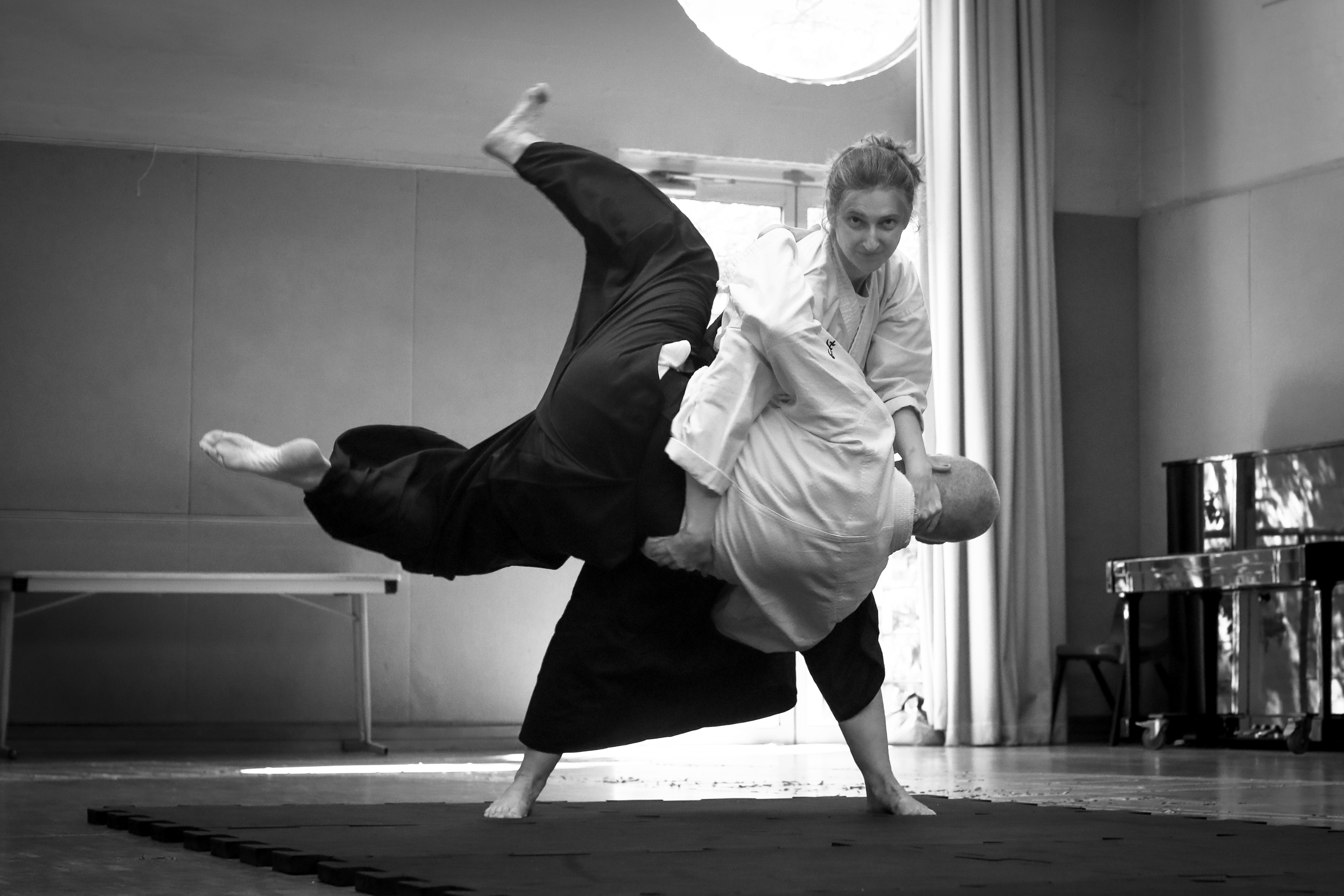 Today we teeter on the edge of the 3rd generation Aikido, that is, there isn’t the access to direct students of O’Sense, by and large. Also many of the boundaries to training widely, such as being locked within rigid hierarchal structures have started to soften or disappear, though there are bastions of expertise, ( and ignorance) running very well. Its, I suspect, a function of the desire to get access to as direct a transmission as possible as well as the influence of global culture pushing into dojo. In fact is possible in Australia to attend seminars, from all kinds of direct lineages to the founder, every month or more. There is at times abundant opportunity to get a wide adn at times diverse views of the founders aikido from many perspectives. Issues of quality aside, it can really enhance our understanding of the art, though important to do this mindfully.
Today we teeter on the edge of the 3rd generation Aikido, that is, there isn’t the access to direct students of O’Sense, by and large. Also many of the boundaries to training widely, such as being locked within rigid hierarchal structures have started to soften or disappear, though there are bastions of expertise, ( and ignorance) running very well. Its, I suspect, a function of the desire to get access to as direct a transmission as possible as well as the influence of global culture pushing into dojo. In fact is possible in Australia to attend seminars, from all kinds of direct lineages to the founder, every month or more. There is at times abundant opportunity to get a wide adn at times diverse views of the founders aikido from many perspectives. Issues of quality aside, it can really enhance our understanding of the art, though important to do this mindfully.
All aikido schools, and indeed dojo within schools have considerable variation on the surface. I imagine its quiet possible to devote a lifetime to studying these differences without penetrating to the core of aikido nor the founders intent. That is, to be so busy with the variation/minutiae in aikido kata, how the kata is practiced in the major schools etc.. that deep learning is somehow ancillary.
Within our own dojo we encourage everyone, once a foundation of core skills and good ukemi has been established to train widely. We think it helps to help develop robust experiences and to see what is common between the various schools and dojos rather than the differences. Its also selfish in that it improves the quality of practice within the dojo. It helps avoids ‘tunnel vision’ , avoids belief in the infallibility of sensei (mostly this is obvious at our dojo) and starts to develop a feeling for the core principles of aikido and with it confidence in practice.
The challenge of running a dojo though is how to embrace the diversity, yet avoid becoming an Aikidoka or dojo that is just based on loosely focused experiences and training pedagogy. This is where the core practice, structure from sensei and teaching team and affiliation is so important. From this we have structure, principally through syllabus and instruction pedagogy. In our school, after 2nd Kyu the art becomes freer and more accommodating of different ways to move, a ukemi method that is compatible with free flowing training, resistance training and a dojo of thoughtful people open to the expression of ‘aiki’. If someones been to a seminar we generally like to see some review of a seminar or experience undertaken in the dojo as a structured part of information being brought back, through seeing it and feeling it expressed in the uke-nage interactions is probably where the real transmission of it is. Superficial differences aside, considerable care in ensuring it doesn’t detract from the programmed life of the dojo, nor detract from the study of the art, through the vehicle of syllabus needs to be taken.
Were it possible to be a student in daily contact with a master teacher I think the importance of training widely would be less of a consideration. The reflections on this dilemma by Peter Goldsbury are a valuable read. We have seen over the years the negative influences in restricting students exposure to the wider aikido community unduly, ultimately leading to stagnation. But also the dangers in abandoning ones self with no connection/lineage to the source and leads to unfocused aikido. There is a kind of dynamic tension between the two and the importance in having a direct teacher to maintain a particular focus is very important at both dojo and organisational level.
Thus at the aiki smorgasboard we think its wise to not over fill the plate in excitement, but instead to allow time for digestion to take place but most importantly not to go hungry.

1 comment for “The Aiki Smorgasboard”